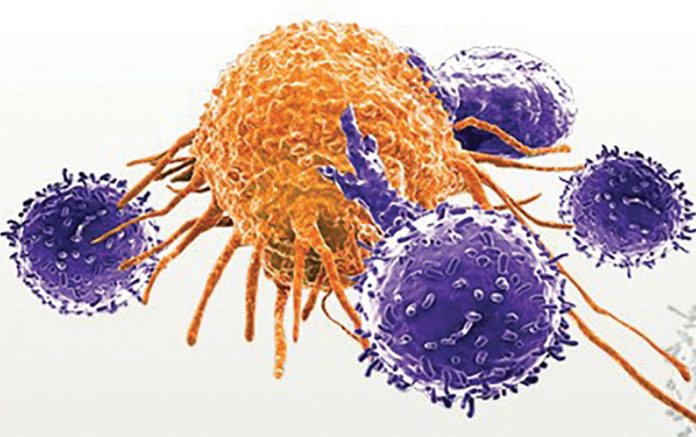Posted: October 2018
With complete remissions seen in up to 90% of patients with B-cell acute lymphoblastic leukemia (ALL), a breakthrough therapy designation in multiple myeloma, and a first-of-its-kind approval for children and young adults with ALL, CAR-T cells have transformed the treatment landscape for hematologic malignancies. Progress in solid tumors, however, has been considerably slower. Charu Aggarwal, MD, MPH, an assistant professor of medicine at the Hospital of the University of Pennsylvania, discusses the status of CAR-T cell research regarding thoracic solid tumors.

Q: How do CAR-T cells work?
A: CAR-T cells have been described as “living drugs” that capitalize on the body’s own immune system to generate response against the tumor. The way they work is that they use the patient’s own T cells, which are re-engineered, to drive an immune response against a particular antigen, for example, on antigens specific to B cells in lymphoblastic leukemia or certain kinds of Bcell lymphomas. CAR-T cells are now being explored in solid tumors as well, including lung, breast, melanoma, and sarcoma.
Q: What are the obstacles and barriers?
A: Specifically for thoracic malignancies, there is no particular antigen that is distinct for tumors themselves, so finding a discrete antigen that we can actually target becomes challenging. There have been clinical trials using EGFR-based approaches, but these have not been successful because, for example, EGFR is expressed widely elsewhere in the body. As a result, an “on target/off tumor” effect can occur; we want to see “on target/on tumor” effect, so I think that’s the biggest obstacle. In addition, as opposed to liquid tumors and other malignancies, patients with lung cancer generally have more comorbidities and are generally sicker, so they may not seek out this therapy unless they’ve received multiple lines of treatment that have failed. This makes it challenging in terms of performance status and the residue of toxicities from the prior treatments.
Q: How does one choose the antigen target?
A: In our current CAR-T cell trial, we are targeting mesothelin as our antigen because it is relatively tumor specific. Mesothelin is highly expressed in mesothelioma and widely expressed in ovarian cancer. In fact, approximately 30% to 50% of patients with NSCLC express mesothelin at various levels, from 0% expression all the way to 100% expression. It’s normally expressed on tumor and not typically on normal tissue, when it is expressed in lung cancer, so that is why we thought it would be a feasible target to evaluate. Certainly, there are other ongoing trials using mesothelin for mesothelioma and lung cancer.
Q: Do you foresee a time where T cells can be “trained” on multiple antigen targets? Or might that lead to untoward toxicity?
A: Certainly that’s the eventual goal; however, it is still early days. Toxicity will be the limiting factor here.
Q: Will the addition of other immunotherapeutics such as checkpoint inhibitors yield a synergistic effect with CAR-T cells?
A: Definitely. There’s ongoing research in hematologic tumors, where PD-L1 therapies are being introduced in the post-CAR-T cell setting. However, we are a long way from using that in solid tumors right now, but we are lucky either way because we do use PD-L1 therapies for solid tumors, particularly NSCLC, so it’s easier for us to study the effects of PD-L1 therapies in patients who are going to receive CAR-T cells. However, a clinical trial that’s combining checkpoint inhibitors with CAR-T cells from the beginning in solid tumors is not ongoing, to the best of my knowledge.
Q: Can the healthcare system afford the cost?
A: It’s certainly expensive, and it’s certainly something we worry about with healthcare costs rising in general. As is the case with other therapies, costs will have to be balanced with the degree of benefit and improvement in outcomes parameters. ✦











